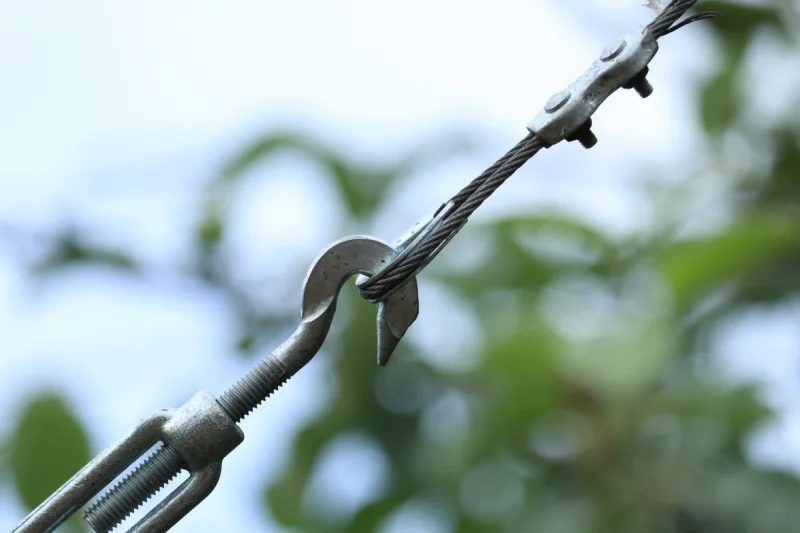Tree service professionals of Naples, Florida talk about how and when to use cable support for your yard trees.
Arborists Practice Tree Cabling To Reduce and Even Repair Storm Damage and Abnormal Growth
Trees and plants grow and adapt their growth in an attempt to get the most out of the available sunlight. This sometimes means that they grow in ways that are inconvenient for people and potentially damaging for both the property they are on and the tree itself.
High winds and storm damage are common occurrences in Florida, and seem to be becoming more and more commonplace. These can also be detrimental to tree health. Tree trimming and tree pruning are great ways to manage the growth pattern of trees, particularly young ones, but these techniques, while widely used, are not always an option. Cabling is that option to provide support.
Tree Cabling: What Is It?
As previously mentioned, tree branches sometimes grow in inconvenient directions, or can grow in ways that cause problems for the tree. Cabling is a way to help mitigate this problem without requiring tree removal. Cabling or bracing involves using a support system of rods and steel cables to hold branches in place, adding strength to the tree’s basic structure.
A system of ropes is sometimes used, and is called a dynamic support system. The goal of the dynamic system is two-fold, one, to provide support while being less invasive and, two, to allow the tree to move in a more natural manner.
Tree Cabling: What Makes a Good Tree Candidate?
Tree cabling is not the answer for every tree. It should never be done in an attempt to save a tree that is already infested with pests or has tree disease. A dying tree is not a good candidate for cabling. A candidate for tree cabling must be otherwise healthy in order for the support system to be successful.
Some examples of problems that can be fixed by these types of arboreal support systems are discussed below.
- Trunk Cracks: If there are cracks near or in the trunk where large branches are splitting off, the tree may need a support structure to help keep the tree from being damaged by strong winds.
- Co-Dominant Stems: Also called a V-crotch, co-dominant branches or stems grow out of the same area of the tree and create the appearance of a V. This area may be weakened by the weight of the two branches and a tree service company may suggest cabling the branches to prevent splitting, especially in an area prone to violent storms.
- Leaning: If a tree’s root structure has been weakened, the tree may start to lean too far in one direction or the other. Though all trees have some bend, this is an extreme case and can potentially be corrected by cabling or bracing.
The How-To’s of Cabling a Tree
Tree care is important not only for the safety of the trees on a property, but also for the people. Tree cabling is a task that should be done by professionals with an experienced eye. In order to make a decision about tree cabling, a homeowner should consult with an arborist for a tree risk assessment to see if the tree is a good candidate for it. Maintenance and inspection of cabled trees should happen on an annual basis.
Once a need for support is determined, the steps for the implementation of the support are:
- Acquire the appropriate cabling kit.
- Choose support points.
- Measure cable.
- Drill holes in the tree.
- Thread cables.
- Tighten cables.
- Adjust as necessary.
- Keep up with inspection.
About Any Town Tree
Based in Naples, FL, Any Town Tree offers expert tree health care at a fair price. We provide emergency tree service as well as commercial and residential tree services. Call today for a competitive estimate.

